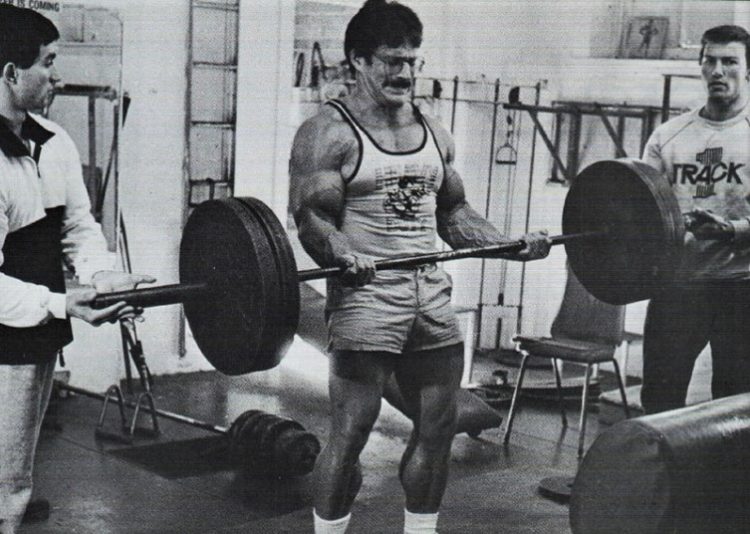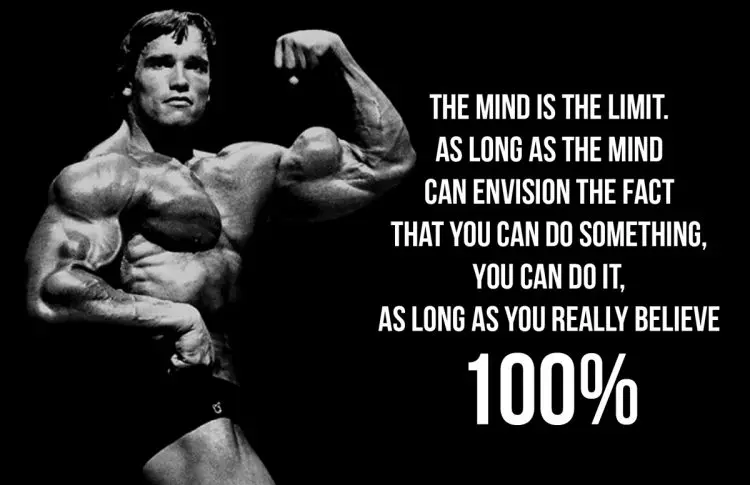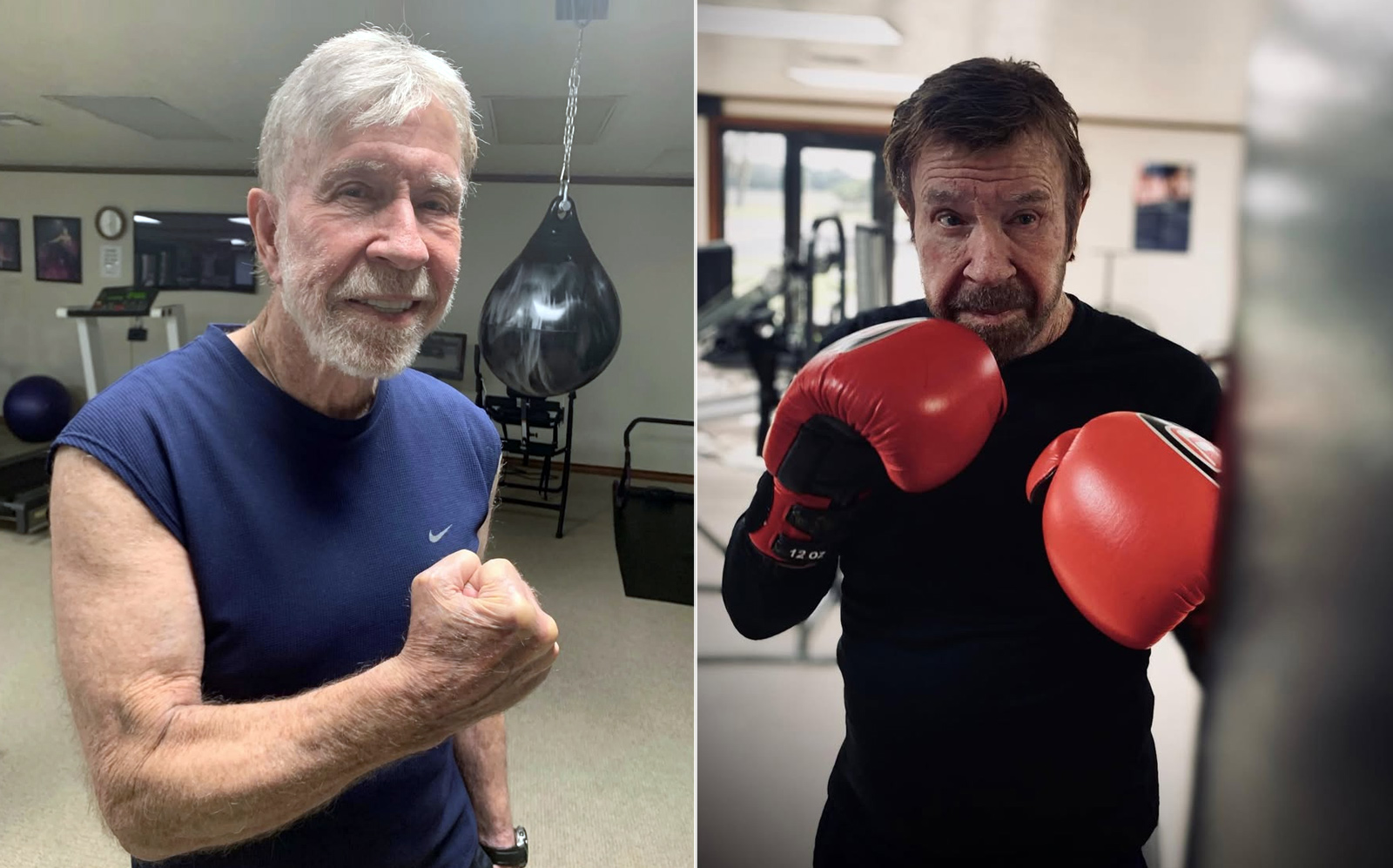Sticking to the same training regime for an extended period can lead to a training plateau. It typically occurs when the body adapts to your training routine, and the stimulus isn’t enough to ignite new strength or muscle gains.
While adhering to a familiar workout routine can make you feel comfortable, know that a plateau is right around the corner. Furthermore, not seeing noticeable improvement over an extended period can lead to a loss of motivation to train.
As a personal trainer with over 17 years of training experience, I’ve overcome multiple training plateaus and helped numerous clients navigate them.
In this article, I pull back the curtain on the five most effective science-backed training tips you can implement to break through plateaus and ignite new muscle and strength gains.
Training Plateaus: A Brief Introduction
The initial stages of any new training program often deliver consistent progress. However, things can go south if you get complacent with your training.
Level Up Your Fitness: Join our 💪 strong community in Fitness Volt Newsletter. Get daily inspiration, expert-backed workouts, nutrition tips, the latest in strength sports, and the support you need to reach your goals. Subscribe for free!
Plateaus are an inevitable part of fitness training. Irrespective of the sport you pick or your fitness level, you will likely hit a plateau at some point. But don’t hang your head — plateaus are not a dead end. Consider them a signal that it’s time to shake things up.
You must constantly find new ways to shock your muscles into growing.
Without further ado, here are the five training techniques you must enforce into your routine to keep your body guessing:
Plateau Breaker 1: Embrace the Power of Progressive Overload
Progressive overload is the holy grail of making consistent progress in the gym. It involves gradually increasing the demands placed on the body to build strength, muscle mass, and endurance.
There are several ways of implementing progressive overload into your routine. You could increase the training load, do more sets and reps, limit the rest duration between sets, employ more challenging exercise variations, or increase your training frequency. (1)
You are limited by your own imagination here.
That said, progressive overload should never come at the cost of proper training form. Increasing the training volume and intensity while overlooking your form can significantly increase injury risk.
When it comes to increasing the poundage, I advise my personal training clients to aim for a gradual increase of five to 10 percent. Anything above this is usually too much of a shock for the muscles, and you might be caught off-guard.
Sometimes, performing an exercise with a picture-perfect form can deliver enough new stimulus to ignite new growth.
Plateau Breaker 2: Vary Your Rep Ranges

I like to think of rep ranges as gears on a bike — each serves a purpose. Sticking to the same rep range can lead to stagnation and limit your growth potential. Here is a brief overview of different rep ranges, depending on varying training objectives: (2)
- Low Reps (1-5): This rep range is the best suited for lifters training for strength gains. It involves lifting as heavy as possible with a longer rest duration. This rep range mainly recruits the fast-twitch muscle fibers.
- Moderate Reps (8-12): The sweet spot for hypertrophy, this rep range recruits both fast and slow-twitch muscle fibers.
- High Reps (15+): Anything above the 15-rep mark with moderate weights is best for promoting muscle endurance, stamina, and muscle pumps. Competitive bodybuilders usually perform higher reps close to a competition to improve muscle conditioning and separation. This rep range engages the fast-twitch fibers.
Now, even when training for hypertrophy, you shouldn’t always perform 12 reps in each set. Challenge your muscles by lifting heavier weights and aiming for eight reps. This introduces an element of surprise and prevents the muscles from plateauing.
Plus, constantly varying the rep ranges ensures that you are training all the muscle fibers optimally, resulting in balanced, overall growth.
The key takeaway is that you should save monogamy for your relationship. Experiment with different exercises, reps, and sets to make consistent progress. Heck, I would even advise you to train with different partners. Each individual has their own training style, experience level, and goals.
Working out with someone more experienced and stronger than you can help you unlock your maximum potential.
Plateau Breaker 3: Incorporate Advanced Training Techniques
To achieve unreal results, you must be willing to do unreal things in the gym. This is precisely where advanced training techniques come in.
Make no mistake: crushing a plateau is easier said than done. More often than not, just doing a few more reps in each exercise isn’t enough to break through plateaus. This is where intensifiers come in.
Advanced training principles like drop sets, supersets, giant sets, rest-pause sets, and intraset stretching significantly increase mechanical tension on the target muscles, resulting in optimal muscle stimulation and growth.
Each advanced training technique works via a unique physiological mechanism, ensuring consistent progress.
Furthermore, these training techniques can help achieve the same results as traditional workouts in half the time, making them incredibly effective for people with busy schedules. (3)
Level Up Your Fitness: Join our 💪 strong community in Fitness Volt Newsletter. Get daily inspiration, expert-backed workouts, nutrition tips, the latest in strength sports, and the support you need to reach your goals. Subscribe for free!
I recommend my clients alternate between these advanced techniques to keep their workouts exciting and avoid burnout.
However, you must pick your advanced training technique cautiously, as some are more suitable for advanced lifters than others. For instance, making the most of blood flow restriction (BFR) training requires decent experience. Wearing the occlusion bands incorrectly can hamper your results and increase the potential for injury.
Controlled Eccentrics
One of the hottest advanced training techniques right now is controlled eccentrics. It involves slowly lowering the weights into the fully stretched position. Since the lengthened position is where the muscles are at their weakest, it leads to greater adaptations compared to training in the shortened position, where the muscles are at their strongest. (4)
These advanced training techniques place significant demands on your muscles, and you don’t want to be caught unprepared.
Spend five to 10 minutes before a training session doing dynamic stretches to prime your muscles, tendons, joints, ligaments, and connective tissues for the workout. This can boost your training performance while limiting the possibility of injury.
Similarly, spend five to 10 minutes after a workout performing static stretches to flush out the metabolites and kickstart recovery.
Plateau Breaker 4: Don’t Neglect Your Mind-Muscle Connection
The role of mind-muscle connection is often overlooked in building muscle. Focusing on contracting a muscle during an exercise can increase muscle stimulation, which can promote hypertrophy. (5)
Weightlifting and bodybuilding are two different endeavors. To promote hypertrophy, you must feel the target muscles stretch and contract under the load rather than mindlessly move the weight.
Think of developing a mind-muscle connection as having a spotlight on the target muscle during an exercise. It ensures it is getting all the attention.
If you’re having difficulty developing a mind-muscle connection, you should slow down the rep tempo and pause in the fully stretched and shortened positions.
Using weights that are too heavy is a common reason for a poor mind-muscle connection. Lightly tapping the target muscles during an exercise can also help deepen the connection and deliver muscle-ripping pumps.
I recommend avoiding using the phone or talking to your training partner during the workout to limit distractions, as they can hamper your focus and mind-muscle connection.
Plateau Breaker 5: Prioritize Rest and Recovery
This might sound counterintuitive, but when you hit a wall, doing less might sometimes be in your best interest.
Pushing yourself to the limit in each workout for an extended period can lead to overtraining, which can hamper your recovery and gains.
Remember, you break muscle tissue in the gym during your workouts, and your muscles grow back bigger and stronger while you are resting. Plus, you must follow a balanced diet to ensure your muscles have ample building material for optimal muscle and strength gains.
Neglecting recovery can stall your progress, increase injury risk, hamper the immune system, and cause mental burnout.
Aim for at least seven to eight hours of sleep each night. It is non-negotiable when you are following an intense training regime. During sleep, your body releases growth hormone, which is essential for growth and repair.
Use this convenient TDEE calculator to determine your ideal daily calorie intake and macronutrient split.
Recovery Tools
I recommend using sports nutrition supplements like whey protein, creatine, and EAAs if you can’t meet your daily nutrition goals through whole foods.
Experiment with different recovery tools like foam rolling, massage, and compression garments to reduce muscle soreness. Furthermore, don’t turn into a couch potato on your rest days. Embrace active recovery to boost your recovery. Light cardio activity like outdoor walking or hiking boosts blood flow throughout the body, which can reduce muscle soreness and promote recovery. (6)
While these five methods are incredibly effective for breaking through training plateaus, you must learn to listen to your body. Pay close attention to signs of pain or discomfort, and stop and reassess your approach if something doesn’t feel right. Pushing through pain can increase injury risk and derail your progress.
I highly recommend beginners work with an experienced personal trainer to design a personalized workout program that aligns with their fitness level and goals. This might cost you some money upfront, but it will significantly shorten your learning curve and ensure you are implementing progressive overload safely.
Conclusion
Change should be the only constant in strength training regimes. While each of these five advanced training techniques is potent on its own, incorporating them simultaneously into your routine can help break through plateaus and unlock your maximum genetic potential.
Beginners should start small and allow their bodies time to adapt to the new programming. Doing too much too soon can also be a recipe for disaster.
If you have any questions about the five plateau-breaking training techniques detailed in this article or need help implementing them into your routine, post them in the comments below, and I’ll be happy to help!
References:
- Chaves, T. S., Scarpelli, M. C., Bergamasco, J. G. A., Silva, D. G. D., Medalha Junior, R. A., Dias, N. F., Bittencourt, D., Carello Filho, P. C., Angleri, V., Nóbrega, S. R., Roberts, M. D., Ugrinowitsch, C., & Libardi, C. A. (2024). Effects of Resistance Training Overload Progression Protocols on Strength and Muscle Mass. International journal of sports medicine, 45(7), 504–510. https://doi.org/10.1055/a-2256-5857
- Schoenfeld BJ, Grgic J, Van Every DW, Plotkin DL. Loading Recommendations for Muscle Strength, Hypertrophy, and Local Endurance: A Re-Examination of the Repetition Continuum. Sports (Basel). 2021;9(2):32. Published 2021 Feb 22. doi:10.3390/sports9020032
- Iversen, V. M., Eide, V. B., Unhjem, B. J., & Fimland, M. S. (2024). Efficacy of Supersets Versus Traditional Sets in Whole-Body Multiple-Joint Resistance Training: A Randomized Controlled Trial. Journal of strength and conditioning research, 38(8), 1372–1378. https://doi.org/10.1519/JSC.0000000000004819
- Pedrosa, G. F., Lima, F. V., Schoenfeld, B. J., Lacerda, L. T., Simões, M. G., Pereira, M. R., Diniz, R. C. R., & Chagas, M. H. (2022). Partial range of motion training elicits favorable improvements in muscular adaptations when carried out at long muscle lengths. European journal of sports science, 22(8), 1250–1260. https://doi.org/10.1080/17461391.2021.1927199
- Calatayud, J., Vinstrup, J., Jakobsen, M. D., Sundstrup, E., Brandt, M., Jay, K., Colado, J. C., & Andersen, L. L. (2016). Importance of mind-muscle connection during progressive resistance training. European journal of applied physiology, 116(3), 527–533. https://doi.org/10.1007/s00421-015-3305-7
- Sousa CA, Zourdos MC, Storey AG, Helms ER. The Importance of Recovery in Resistance Training Microcycle Construction. J Hum Kinet. 2024;91(Spec Issue):205-223. Published 2024 Apr 15. doi:10.5114/jhk/186659











